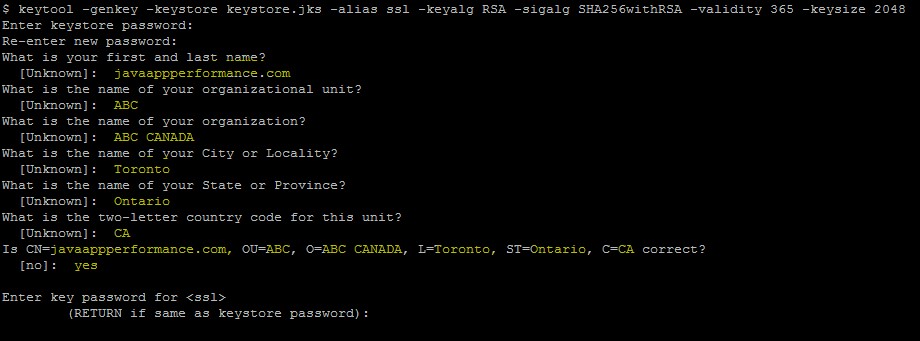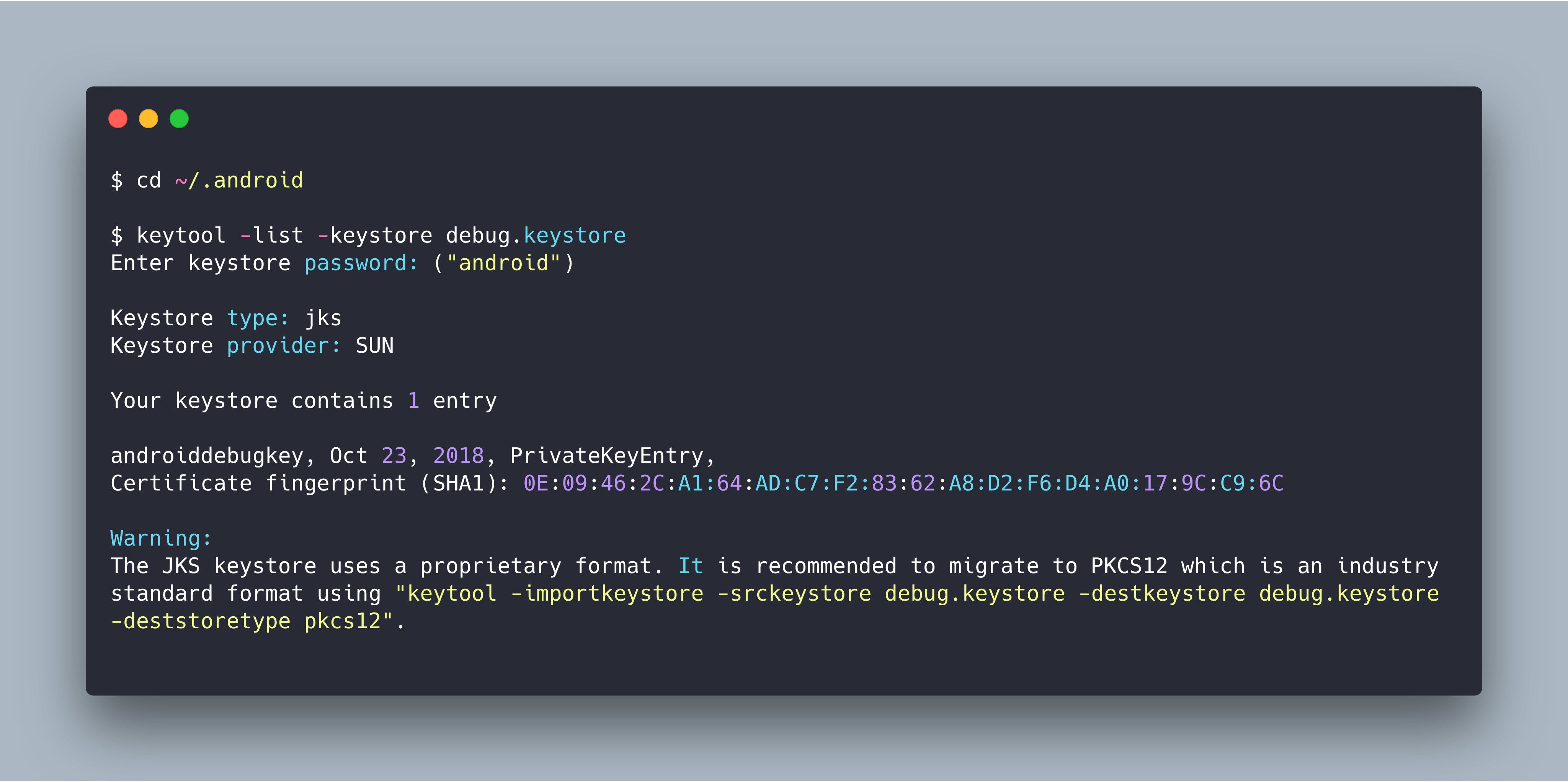Java Keystore Generate Private Key
If a code signer does not yet have a suitable private key for signing the code, the key must first be generated, along with a corresponding public key that can be used by the code receiver's runtime system to verify the signature.
Jan 17, 2019 2. Exporting the private key from the PKCS12 format keystore: Once you enter this command, you will be prompted for the password, and once the password (in this case ‘password’) is given, the private key will be saved to a file by the named privatekey.pem. The Java keytool utility creates both your private key and your certificate signing request, and saves them to two files: yourcommonname.jks, and yourcommonname.csr. You can then copy the contents of the CSR file and paste it into the CSR text box in our order form. Create a keystore that contains a private key. Generate a CSR (Certificate Signing Request) from keystore. Generate a signed primary/server certificate from the Certificate Authority. Import the primary/server certificate, root, and intermediate CA certificates to keystore.
Since this lesson assumes that you don't yet have such keys, you are going to create a keystore named examplestore and create an entry with a newly generated public/private key pair (with the public key in a certificate).
Java Keystore Generate Private Keyboard
Type the following command in your command window to create a keystore named examplestore and to generate keys:
Java Keystore Generate Private Key For Putty
You will be prompted to enter passwords for the key and keystore.
Subparts of the keytool Command
Let's look at what each of the keytool subparts mean.
- The command for generating keys is -genkey.
- The -alias signFiles subpart indicates the alias to be used in the future to refer to the keystore entry containing the keys that will be generated.
- The -keystore examplestore subpart indicates the name (and optionally path) of the keystore you are creating or already using.
- The storepass value that you are promted for specifies the keystore password.
- The keypass value that you are prompted for specifies a password for the private key about to be generated. You will always need this password in order to access the keystore entry containing that key. The entry doesn't have to have its own password. When you are prompted for the key password, you are given the option of letting it be the same as the keystore password.
Note: For security reasons you should not set your key or keystore passwords on the command line, because they can be intercepted more easily that way.
Distinguished-Name Information
If you use the preceding keystore command, you will be prompted for your distinguished-name information. Following are the prompts; the bold indicates what you should type.
Command Results
The keytool command creates the keystore named examplestore (if it doesn't already exist) in the same directory in which the command is executed. The command generates a public/private key pair for the entity whose distinguished name has a common name of Susan Jones and the organizational unit of Purchasing.
The command creates a self-signed certificate that includes the public key and the distinguished-name information. (The distinguished name you supply will be used as the 'subject' field in the certificate.) This certificate will be valid for 90 days, the default validity period if you don't specify a -validity option. The certificate is associated with the private key in a keystore entry referred to by the alias signFiles.
Windows 10 pro activation key generator pirate bay. Windows 10 pro keygen is said to be newly introduced but attracted various individuals as such started using the Microsoft in a greater way. It is compatible for any of the Microsoft PC.
Self-signed certificates are useful for developing and testing an application. However, users are warned that the application is signed with an untrusted certificate and asked if they want to run the application. To provide users with more confidence to run your application, use a certificate issued by a recognized certificate authority.

Note: The command could be shorter if option defaults are accepted or you wish to be prompted for various values. Whenever you execute a keytool command, defaults are used for unspecified options that have default values, and you are prompted for any required values. For the genkey command, options with default values include alias (whose default is mykey), validity (90 days), and keystore (the file named .keystore in your home directory). Required values include dname, storepass, and keypass.
From time to time you have to update your SSL keys and certificates. In some cases you may have a mixed infrastructure e.g. 'normal' http servers and tomcat or other java based servers. In the latter case you'll have to import your shiny new certificate and key into your java keystore.
There are several methods that you can use but I found the following the most simple:
- Export your key, certificate and ca-certificate into a PKCS12 bundle via

- Be sure to set an export password! (see further below for an explanation)
- If you get the following error message 'Error unable to get issuer certificate getting chain.' then you should concatenate the openssl ca-certs with your own ca-cert into one file and use that as parameter for
-CAfile. Example:
- Import the PKCS12 file into a new java keystore via
Attention!
If you don't set an export password in the first step the import via keytool will most likely bail out with an NullPointerException.